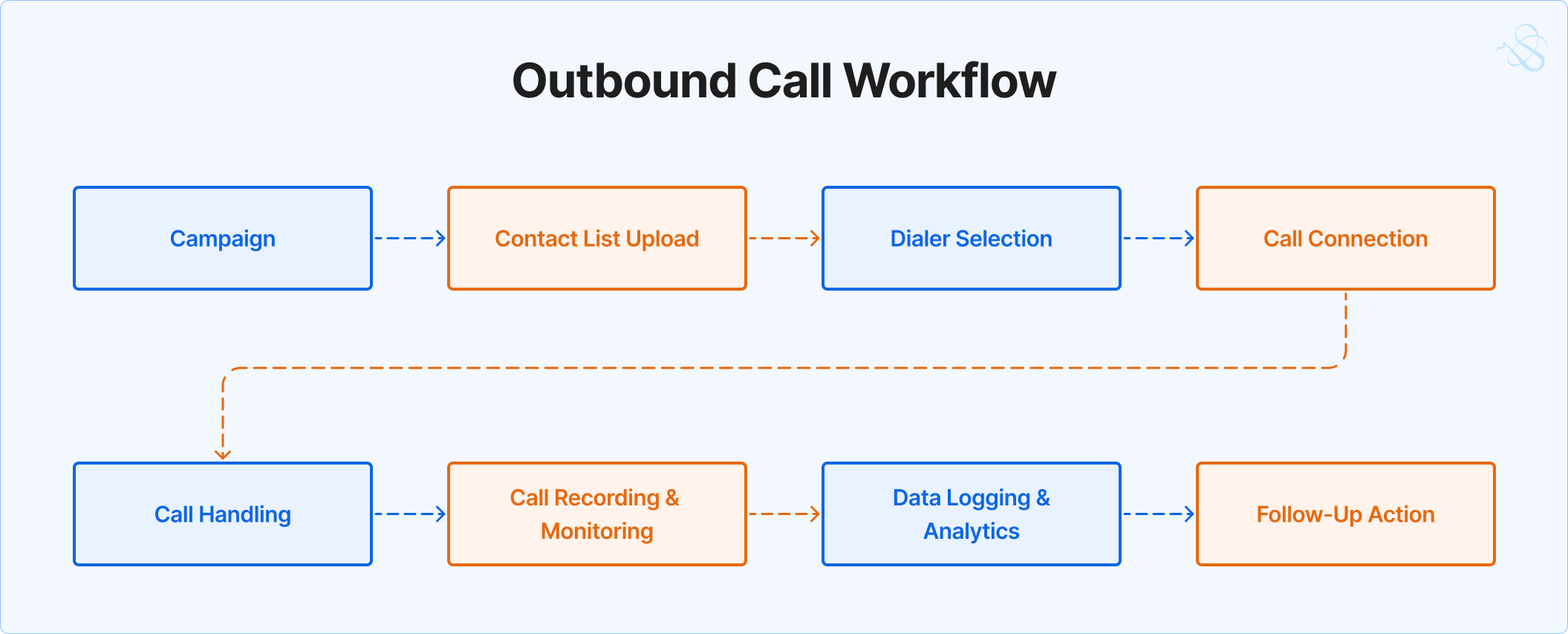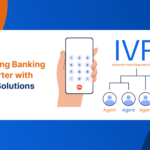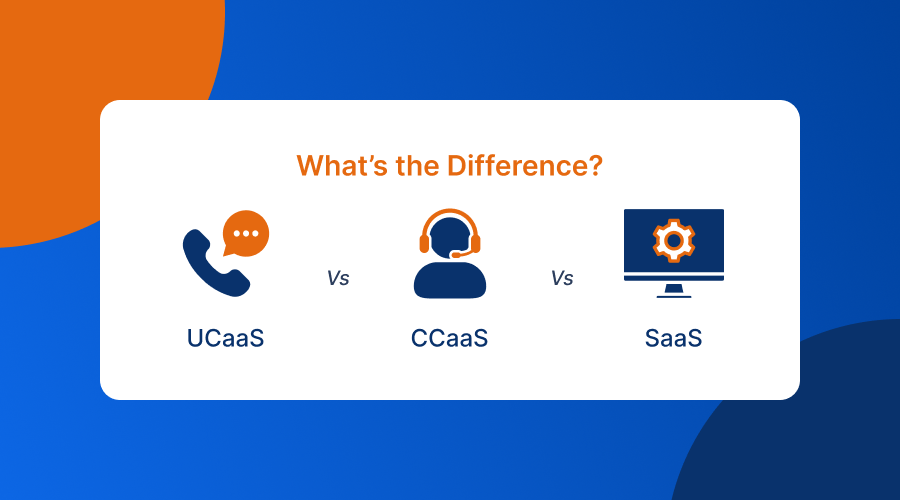In this guide, we’ll break down everything about inbound and outbound calls — their meanings, examples, differences, benefits, tools, and best practices.
We’ll also share how modern call centers combine both strategies to deliver better customer experiences and business results.
Quick Summary
Inbound and outbound calls are the two primary types of business communication. Inbound calls are made by customers to a company—usually for support, inquiries, or service requests. Outbound calls are made by company representatives to customers—often for sales, feedback, or follow-ups. Modern call centers use AI, cloud telephony, CRM integration, and analytics tools like DeepCall, Twilio, and HubSpot to manage both efficiently, improving customer experience and overall business performance.
1. What Is an Inbound Call?
In today’s competitive business landscape, communication plays a vital role in customer experience and brand reputation. Every call your business makes or receives contributes to how customers perceive your service quality. Understanding the difference between inbound and outbound calls helps you build efficient communication strategies and deliver exceptional support.

Examples of inbound calls:
- A customer calling a helpline for troubleshooting a service issue.
- A potential buyer calling to know more about pricing or features.
- A user calling to track their order or update their account.
Inbound calls are primarily reactive — they happen when a customer takes the first step to connect.
Common Industries Using Inbound Calls
- Telecom & Internet providers
- Banking and Insurance
- Healthcare
- E-commerce
- Travel & hospitality
Goals of Inbound Call Centers
- Improve customer satisfaction (CSAT)
- Increase first-call resolution (FCR)
- Reduce average hold time (AHT)
- Strengthen brand trust and loyalty
2. What Is an Outbound Call?
An outbound call is a call initiated by the agent or company to contact customers or prospects. These are often used for sales, lead generation, surveys, feedback, renewals, or collections.

Examples of outbound calls:
- A sales executive calling to offer a new product.
- A support agent calling for service renewal or subscription upgrade.
- A survey call to collect feedback after service.
Outbound calls are proactive — the business reaches out first to connect, inform, or sell.
Industries Commonly Using Outbound Calls
- B2B and B2C sales
- Real estate and insurance
- Market research
- Political campaigns
- Telemarketing and fundraising
Goals of Outbound Call Centers
- Generate qualified leads
- Boost conversion and sales
- Conduct surveys or feedback collection
- Increase customer retention
3. Difference Between Inbound and Outbound Calls
| Factor | Inbound Calls | Outbound Calls |
|---|---|---|
| Who initiates the call | Customer | Company/Agent |
| Goal | Customer support, queries, service | Sales, marketing, surveys |
| Nature | RealReactive | Proactive |
| Tools used | IVR, ticketing, CRM | Dialers, lead lists, CRM |
| Success metrics | FCR, CSAT, AHT | Conversion rate, response rate, ROI |
| Examples | Customer calling support | Agent calling customer for upsell |
In simple words:
- Inbound calls = customers calling you for help.
- Outbound calls = you calling customers to offer or inform something.
4.
Inbound Call Center: Meaning, Functions, and Benefits
An inbound call center handles all incoming calls from customers. It acts as the first line of customer support and brand communication.
Core Functions
- Technical support & troubleshooting
- Billing and account assistance
- Product or service inquiries
- Order tracking and cancellations
- Complaint management
Tools Used in Inbound Call Centers
- IVR (Interactive Voice Response): to guide callers and route calls efficiently.
- Automatic Call Distribution (ACD): to connect calls to the right department.
- CRM integration: to access customer history in real-time.
- Call recording: for quality monitoring and training.
Benefits
- Improves customer satisfaction
- Builds trust and long-term loyalty
- Reduces churn rate
- Increases operational efficiency
Inbound call centers are essential for brands focusing on customer experience and service excellence.
5.
Outbound Call Center: Meaning, Functions, and Benefits
An outbound call center is responsible for making outgoing calls to existing or potential customers.
Core Functions
- Cold calling and lead generation
- Appointment setting
- Customer follow-ups
- Subscription renewals and upgrades
- Surveys and feedback collection
- Debt collection or reminders
Tools Used in Outbound Call Centers
- Predictive dialers: automate dialing large lists.
- CRM software: track interactions and outcomes.
- Call scripting tools: ensure consistency in communication.
- Analytics tools: monitor performance and success rate.
Benefits
- Increases sales and conversions
- Builds stronger customer relationships
- Enables data collection for insights
- Enhances brand recall through proactive communication
Outbound call centers are ideal for sales-driven and growth-oriented businesses.
6. Technologies Used in Call Centers
Modern inbound and outbound call centers rely on automation and AI to improve efficiency.
Common Technologies
- Cloud telephony: enables remote operations and scalability.
- AI-powered IVR: provides self-service and intelligent routing.
- CRM integration: connects call data with customer profiles.
- Analytics dashboards: track performance, KPIs, and customer satisfaction.
- CTI (Computer Telephony Integration): connects calls with other digital tools.
Example Tools
- DeepCall – modern cloud telephony solution offering AI-powered call management, real-time analytics, and CRM integration
- Twilio – robust cloud communication APIs for scalable voice and messaging solutions.
- Zendesk – omnichannel support and ticketing software for customer service teams.
- HubSpot – CRM and automation platform with integrated calling features.
- Five9, Freshcaller, Aircall – popular call management platforms for global teams.
7.
Key Metrics to Measure Inbound and Outbound Performance
Inbound Metrics
- First Call Resolution (FCR): percentage of issues resolved on the first call.
- Average Handling Time (AHT): average time spent per call.
- CSAT (Customer Satisfaction Score): customer feedback rating.
- Service Level: percentage of calls answered within a target time.
Outbound Metrics
- Conversion Rate: ratio of successful outcomes per total calls.
- Call-to-Connect Ratio: percentage of calls that actually reach customers.
- Lead-to-Sale Rate: ratio of leads converted into sales.
- Response Rate: number of customers engaging back after calls.
Tracking these helps in optimizing agent performance and business ROI.
8. Advantages of Using Both Call Types Together
Many modern call centers adopt a hybrid model — handling both inbound and outbound calls simultaneously.
Benefits of Combining Both
- Improved customer engagement across the entire lifecycle.
- Higher lead conversion with proactive follow-ups.
- Better data insights to refine sales and support strategies.
- Stronger brand relationships through continuous communication.
For instance, after solving a customer’s issue via an inbound call, an outbound follow-up can be made to ensure satisfaction — enhancing both service and retention.
9. Real-World Use Cases
Example 1: E-Commerce Company
An online store receives inbound calls for order tracking. The same team makes outbound calls for product feedback and promotions.
Banks handle inbound calls for loan queries and support, while outbound calls target new credit card offers or reminders.
Example 3: Telecom
Telecom companies manage inbound calls for network issues, while outbound teams upsell new data plans or devices.
Hospitals receive inbound calls for appointments and outbound calls for patient reminders.
This hybrid communication ensures consistent service and customer engagement.
10. Conclusion
Inbound and outbound calls are the backbone of business communication.
- Inbound calls build trust, solve problems, and improve satisfaction.
- Outbound calls drive growth, sales, and engagement.
A balanced approach — where your call center efficiently handles both — ensures you not only attract new customers but also retain existing ones.
With the help of modern cloud technology, analytics, and automation, businesses can create a seamless experience across both call types, improving service quality and achieving higher ROI.
FAQ
What is an inbound call meaning?
An inbound call is a call made by a customer to a business for queries, support, or information.
What is an outbound call meaning?
An outbound call is initiated by a company or agent to reach out to customers for sales, feedback, or renewals.
What is the main difference between inbound and outbound calls?
Inbound calls are customer-initiated and focus on support, while outbound calls are business-initiated and focus on marketing or sales.
What is an inbound and outbound call center?
Can one call center handle both inbound and outbound calls?
Yes, many modern call centers are hybrid — handling both incoming and outgoing calls using cloud telephony systems.
Which is better: inbound or outbound calls?
Both serve different purposes. Inbound calls improve customer experience, while outbound calls drive growth and conversions. A mix of both works best.





